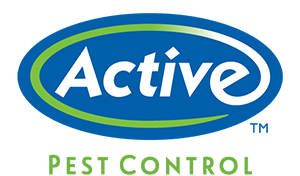There are a few common misconceptions about springtails in the Atlanta area. These misunderstandings can prevent people from acting against the nuisance they can cause. Just because Springtails are not dangerous or harmful to your health, it doesn’t mean they won’t cause big – and expensive – headaches. Active Pest Control warns against these year-round pests.
What are Springtails
They aren’t fun critters, as their names suggest. Springtails are tiny bugs that are no bigger than 6 mm. That is about as big as a pearl. Springtails get their name from spring-like feature they have on the underside of their bellies. When the springtail is irritated or disturbed, the bug springs into the air.
What do springtails look like?
Springtails are wingless bugs that are often cream colored to light brown. The springtail has an oval head and four antennae. The bodies are soft, so when you see one, feel free to crush it.
Dangers of springtails
There are no reported health risks to humans associated with springtails. They do not bite or scratch, they do not sting, and do not carry disease. Springtails won’t damage your home or furnishings either. What they can do, however, is take over quickly and spread throughout your home. Once springtails are in and take over, they are difficult to control without professional support and services.
Where springtails thrive
Springtails like it wet, muggy, and humid but can thrive in any environment. That means they can be found all throughout your home. Springtails are attracted to basements, attics, bathrooms, and in any other moist and dark areas. Springtails can be found inside or outside your home. Once springtails find a cool and comfortable space, they reproduce quickly.
Springtails go inside or hide under porches and decks when the weather heats up outside. This is because springtails are looking for wet, moist areas. It is not uncommon to find springtails in the following areas:
- Soil, moss, mulch, and leaves around the home
- In wet basements
- Near Jacuzzis and outdoor pool areas
- In plants and their pots
- In building materials
- In bathrooms
Wherever humidity is present in and around your home, that is where you can find springtails.
What do springtails eat?
Springtails feast on decaying plants and flowers, mold, mildew, bacteria, and fungi. They can also find satisfaction in rotting roots and wet soils.
Should You Be Concerned?
So, they are small and they don’t cause harm or damage. Should you worry about springtails? Yes. You should treat all nuisances and pests the same. They don’t belong in your home. Once a springtail community starts to thrive, it doesn’t take long before the population explodes.
Springtail populations can reach as many as 50,000 bugs per 1 cubic feet of dense forest area, and nearly 3,000 per square foot around your home.
These bugs reach high populations quickly, which means prevention is your best plan of attack against an invasion. Year-round services offered by the ones at Active Pest Control is the best defense when combined with easy housekeeping strategies. Reduce humidity in areas in your home, inspect wet and dark corners, dry out areas with excessive moisture, and call Active Pest Control.

